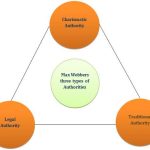
1. When scholars realised that fixed rules alone can’t solve sociological problems, they moved away from positivism and towards non-positivism. While positivists thought that society was a given and that people were just a part of it that had to follow its rules. Non-positivists, on the other hand, saw man as an independent thinker who can also have an effect on society. They didn’t like the idea that people were too socialised. So, non-positivist methods tried to figure out what goes on in people’s heads and how that affects society.
Even before sociology became a formal field of study, these kinds of ideas were common in the late 18th century, when the German “idealist” school tried to describe social reality in a different way. Scholars like Dilthey and Rickert pointed out how different the natural world and the social world are. According to them, the social world is built on the unique meanings, symbols, and goals of each human society. George Hegel, the head of the German idealist school, said, “Social phenomena are the result of the ideas that people have, and these ideas are what make history.” This practise kept going, and by the end of the 19th century, a strong alternative to positivism had formed. This group of different ideas was called non-positivist methodology.
3. Weber was one of the first people to argue against positivism. Other early doyens were like Mead, Herbert Blumer, Schutz etc. Weber laid the groundwork for interpretivism, and Mead was the first person to use symbolic interactionism. Symbolic Interactionism, Ideal Types and Verstehen by Weber, Phenomenology by Alfred Schutz in the 1930s, Ethnomethodology by Harold Garfinkel in the 1940s, and so on, are all examples of non-positivist approaches that came about.
Table of Contents
- 1 Various elements that run common to these methodologies are –
- 2 Here are some of the most important non-positivist approaches.
- 3 Symbolic Interactionism (Interactionism)
- 4 Interactionism (Symbolic Interactionism): What’s Wrong with It?
- 5 Phenomenology:
- 6 Phenomenology Analysis:
- 7 Ethnomethodology:
- 8 Critique to Ethnomethodology:
- 9 Sociology based on interpretation:
Various elements that run common to these methodologies are –
1. Non-positivists look at the internal processes that are shown by feelings, motives, goals, and how a person sees social reality. For example, ethnomethodology is based on the methods and stories that artists use in their everyday lives.
Non-positivists stressed using qualitative methods instead of scientific ones. In the past, non-positivists like Weber and Mead put a lot of emphasis on using scientific methods. However, later non-positivists like Alfred Schutz and Garfinkel flatly refused to use them.
3. Non-positivists also said that we should try to understand social truth and not try to predict what will happen. They didn’t try to make ideas that could be applied to everyone. Weber and Mead both put a lot of emphasis on cause and effect, but Schutz took that away.
4. Non-positivists also pointed out that total objectivity is impossible, so they were open to subjectivity in study.
Here are some of the most important non-positivist approaches.
Symbolic Interactionism (Interactionism)
The symbolic interactionist view says that social meaning comes from the way people connect with each other. Contemporary symbolic interactionism is based on three basic ideas: 1) People’s actions are based on the meanings they give to things; 2) These meanings come from or are a result of their interactions with other people; and 3) These meanings can be changed or modified through the processes of interaction and interpretation.
1. Symbols We Use Every Day. Without signals, we wouldn’t be much better at getting along with other people than animals. For example, we wouldn’t have aunts and uncles, bosses or teachers, or even brothers and sisters, if it weren’t for symbols. Even though this sounds strange, our interactions are made up of signs. There would still be reproduction, but there wouldn’t be any signs to show who is connected to whom. We wouldn’t know who we owe respect and responsibilities to or who we can expect privileges from. This is the most important part of human interactions.
2. Look at it this way: if you think of someone as your aunt or uncle, you act one way, but if you think of them as your boyfriend or girlfriend, you act very differently. It’s a sign of how you are related to other people and how you should treat them.
Let’s make it a little less vague. Take this as an example: Imagine that you have fallen in love with someone. After what seems like a long time, it’s finally the night before your wedding. As you think about how great tomorrow will be, your mother comes to you with tears in her eyes. She tells you, while crying, that she had a child before she married your dad, but that she gave the child up for adoption. She starts to cry and says that she just found out that this child is the person you are going to marry. You can see how the sign, and your behaviour, will change overnight. Not only do partnerships need symbols to work, but so does society as a whole. We couldn’t work together with other people if we didn’t have symbols. We couldn’t make plans for a day, time, or place in the future. We couldn’t build bridges and roads because we couldn’t decide on times, materials, sizes, or goals. There would be no films or musical instruments if there were no signs. We would have no hospitals, no government, and no church.
4. People who believe in this view, which is often called the interactionist view, do microlevel analysis, which looks at how people and groups interact with each other in specific social situations. Meaningful symbols, the definition of the situation, and the looking-glass self are three important ideas that help you understand this theoretical method. The interactionist point of view also fits with two important types of theoretical analysis: dramaturgical analysis and the labelling method.
5. Symbols with Meaning: George H. Mead, who lived from 1863 to 1931, said that society is made possible by the constant process of social interaction and the making, defining, and redefining of important symbols. Meaningful symbols are sounds, objects, colours, and events that stand for something other than themselves. It’s important to understand how people connect with each other because of this. Language is one of the most important and powerful signs that humans have made, because it lets us interact through the shared meaning of words.
6. Definition of the Situation: This refers to the idea that “if [people] define situations as real, they are real in their consequences” (Thomas and Thomas, 1928:572). People make up social reality through a process of giving and receiving. Once a meaning is set, it affects everything that comes after. Have you ever decided you were “in love” with someone, for example? If so, how did that affect your relationship with that person? What happens, on the other hand, when a married pair decides they no longer love each other? How does it affect their relationship if they say their marriage is pointless or if they decide they can’t get along? Is it likely that a marriage will last if both partners say it’s “over”?
7. The Self in the Looking Glass: The looking-glass self is the idea that a person’s sense of himself or herself is mostly a reflection of how other people see him or her (Cooley, 1902, 1922).
Society is used as a mirror to show how someone feels about themselves, whether it’s pride, doubt, self-worth, or hatred. These important parts of symbolic interactionism help us form our personal and social identities, which is part of the process of socialising and becoming human.
8. Analysis of the play: Dramaturgical analysis is a useful way to look at how people act in groups. It is a part of the theory of symbolic interactionism. From this point of view, people are like actors who play different parts in the story of life. In real life, people don’t just accept what others say about a situation or what their social identities are. Instead, they get involved in the drama and change the way people talk to each other to make themselves look better. So, people often try to make a good image of themselves through impression management (Goffman, 1959).
9. The Labelling Approach: The labelling approach is another way of thinking about symbolic interactionism. It says that people give different labels to certain behaviours, people, and groups. These labels become a part of their social identity and affect how other people think about them and treat them. Howard Becker’s 1963 book Outsiders, for example, looked at the interesting world of jazz artists and how their non-traditional music, love of marijuana, and open racial integration in the 1950s led most Americans to call them “deviant.” In the late 1950s, a group of sociologists claimed that the approach of the Chicago School and symbolic interactionism was too reliant on ethnographic studies, personal observations, interviews, and subjective interpretations. This made the Chicago School and symbolic interactionism less influential. This group thought that sociology should depend more on quantifiable data, facts, figures, and statistics. They thought that sociology should be more scientific or, at the very least, more positivistic, as Comte had hoped. This led to the creation of the Iowa School of Symbolic Interaction and helped bring structure functionalism back into fashion.
Interactionism (Symbolic Interactionism): What’s Wrong with It?
People often say that interactionists study how people communicate in a vacuum. (Marxist Criticism) They have tended to focus on small-scale face-to-face interactions and haven’t paid much attention to the political or social contexts of those interactions.
2. They’ve focused on specific situations and meetings and haven’t said much about the history that led up to them or the bigger social context in which they happen. Since these things affect the relationship situation, the fact that they haven’t gotten much attention is seen as a big mistake.
3.Symbolic interactionism is a way to fix the problems with social determinism, but many critics say it has gone too far in this direction. Even though interactionists say that actions are not based on structural rules, they do agree that there are such norms. But they tend to take them for granted and not explain where they came from.
4. William Skidmore says that interactionists don’t do a good job of explaining “why people always choose to act in certain ways instead of all the other ways they could have acted.” Interactionists try to play down the limits on action by focusing on how flexible and free human action is. Skidmore says that this is because “interactionism consistently fails to explain social structure.” In other words, it doesn’t do a good job of explaining how and why people act in accordance with social rules and how they become standardised.
5.Interactionists have also been criticised for what many people see as their inability to understand where the meanings they care so much about come from. Critics say that these kinds of messages don’t just pop up when people talk to each other. Instead, they are made by the way the social organisation works.
6. Marxists have said that most of the ideas that come out of face-to-face interactions are the result of class differences. From this point of view, interactionists haven’t explained the most important thing about ideas, which is where they came from.
7. Interactionism is a type of sociology that is very American, and some people think that explains some of its flaws. So, Leon Shaskolsky has said that interactionism is mostly a reflection of the culture values of American society. He says that the roots of interactionism are deeply rooted in the cultural environment of American life, and that interactionism’s view of society is, in a way, a “looking-glass” picture of what that society claims to be. Interactionism’s focus on independence, freedom, and individuality can be seen as a reflection of how Americans see themselves.
Phenomenology:
• Phenomenological views in sociology say that the topics of the social sciences and the natural sciences are very different. Because of this, the methods and ideas of the nature sciences are not good for studying people.
• The natural sciences study things made of stuff. To understand and describe how matter acts, all you have to do is look at it from the outside. Atoms and molecules don’t think or feel anything. They don’t have meanings and goals that guide how they act. Matter just responds “unconsciously” to outside forces; in science terms, it acts. So, the natural scientist can watch, measure, and put an outside logic on that action to try to figure out what it means. He doesn’t have to figure out how the awareness of matter works on the inside because it doesn’t exist.
1. Unlike matter, man has consciousness, which includes thoughts, feelings, meanings, intentions, and a knowledge of being. Because of this, his actions have meaning. He defines events and gives his own and others’ actions meaning. So, he doesn’t just react to things going on around him, and he doesn’t just act, he acts. Think about how early man would have reacted to fires caused by volcanoes or by themselves. He didn’t just react the same way every time he felt hot. He gave it many different meanings, and his behaviours were based on those meanings. For example, he thought of fire as a way to keep warm and used it to heat his homes. He also thought of it as a way to protect himself and used it to scare away wild animals. He also thought of it as a way to change things and used it to cook and harden the tips of wooden swords. Man doesn’t just respond to fire; he also acts on it based on what he thinks it means.
2. If actions are based on what people think they mean, then a sociologist must find out what those meanings are in order to understand actions. He can’t just look at things from the outside and try to put his own thinking on them. He has to figure out the internal logic that drives the actor’s actions.
3. Max Weber was one of the first sociologists to write in depth about this point of view. He said that sociological explanations of behaviour should start with “the observation and theoretical interpretation of the subjective “states of mind” of actors.”
Phenomenology Analysis:
1. As the last section said, interactionism takes a similar method, with a focus on how people interact with each other. While positivists focus on facts and how things happen because of other things, interactionists focus on understanding and insight. Since we can’t know what artists are thinking, we have to rely on interpretation and intuition to figure out what they mean. Because of this, it is not possible to measure things in an objective way, and the exactness of the natural sciences cannot be copied. Since meanings are always changing as people talk to each other, it is not possible to set up clear cause and effect relationships. So, some sociologists say that sociology is only about figuring out what is going on in society, and methods like phenomenology are sometimes called “interpretive sociology.”
2. A number of sociologists have said that the scientific way of looking at society has given a skewed picture of how people live. They say that it tends to show man as a passive creature who reacts to things outside of himself rather than as a maker of his own society. Man is seen as responding to different forces and pressures, such as the needs of economic infrastructures and social systems.
3. Peter Berger says that society has often been seen as a puppet theatre, with people seen as “little puppets jumping around on the ends of their invisible strings, happily acting out the parts that have been given to them.” Values, rules, and roles are taught by society, and men follow them like animals on a string. But from a psychological point of view, man doesn’t just react and respond to the outside world; he doesn’t just get acted on; he acts. In his interactions with other people, he makes up his own meanings and builds his own world, which means he decides what to do.
Ethnomethodology:
1. In a general sense, ethnomethodology is the study of how people do things. It looks at the ways people build, explain, and give meaning to their social worlds.
2. Ethnomethodologists rely greatly on the European tradition of phenomenological philosophy and, in particular, the ideas of philosopher and sociologist Alfred Schutz.
3.Many ethnomethodologists start with the idea that society only lives as long as its members think it does. Most people think of ethnomethodology as a psychological approach because it focuses on how people see social reality. Ethnomethodology is a new way of looking at things that includes many different points of view.
4. One of sociology’s main goals is to explain how social order works. From the results of many studies, it seems that social life is organised and predictable, and that people act in a systematic and predictable way. Sociologists have usually thought that social order is an absolute fact.
5. Ethnomethodologists either don’t believe in a real or objective social order or stop believing in it. Instead, they start with the idea that people think social life is well-organized.
So, from the members’ point of view, their daily activities seem planned and organised, but this isn’t always because of the way the social world is made or works. In other words, it might not be there. Instead, it may just seem to exist because of how people see and understand social reality. So, social order becomes a comfortable lie, a false sense of order made up by people in society. This way of looking lets people describe and explain the social world, making it known, reasonable, understood, and “accountable” to its members.
7. Ethnomethodological inquiry is the study of how people in a group create a sense of order by using methods and ways of keeping track of money. Zimmerman and Wieder say that an ethnomethodologist is “interested in how people in society see, describe, and explain order in the world where they live.”
8. Ethnomethodologists criticise other areas of sociology a lot. They say that “traditional” sociologists don’t understand how social reality works. They have treated the social world as if it had a truth that is separate from what people say and how they see it. So, they have seen things in the social world, like death and crime, as facts that have their own lives. Then, they have tried to explain these ‘facts’. Ethnomethodologists, on the other hand, say that the social world is nothing but the ideas, interpretations, and stories of its people. So, a sociologist’s job is to explain how people build their social worlds and how they keep track of their actions. Ethnomethodologists say that this is the job that traditional sociology has not been able to do.
9. An ethnomethodologist doesn’t see much difference between regular sociologists and regular people. They say that the ways sociologists do their study are pretty much the same as the ways people do things in their everyday lives. Members who use the documentary method are always coming up with theories, drawing connections between events, and making the social world look organised and logical. Then, they act as if the social world had its own reality that was different from them.
10. Ethnomethodologists say that the methods used by regular sociologists are pretty much the same. They use the documentary method, theorise about connections, and draw pictures to make a picture of a well-organized social system. They do things automatically, just like everyone else. So, when a functionalist thinks that behaviour is a representation of an underlying pattern of shared values, he uses examples of that behaviour to show that the pattern exists. Members build a picture of society based on how they do their accounts. In this way, the average person is also his own historian. Ethnomethodologists don’t see much difference between the pictures of society that traditional sociologists make and the ones that ethnomethodologists make.
Critique to Ethnomethodology:
1. Ethnomethodology has been called traditional sociology or “folk sociology.” Ethnomethodologists’ critics have said that the people in the kind of society they describe don’t seem to have any goals or motives.
2. Anthony Giddens says that “the pursuit of practical goals or interests” isn’t talked about much. In their works, ethnomethodologists don’t say much about why people want to behave or are made to behave in certain ways. Not much thought is given to how power works in the social world or how different levels of power might affect how people act.
3. As Gouldner points out, Garfinkel doesn’t see the process of defining and establishing social reality as a struggle between competing groups’ definitions of reality. He also doesn’t see how the common sense view of the world has been shaped by institutionally protected power differences.
4. Critics have said that ethnomethodologists haven’t given enough thought to the fact that members’ accounting processes are done in a social system with different levels of power. Many ethnomethodologists seem to think that anything that people don’t recognise and can’t explain is useless. They suggest that if people don’t know about things and events, they won’t be affected by them. But John H. Goldthorpe makes a very clear point in his criticism of ethnomethodology: “If, for example, bombs and napalm are flying down, members don’t have to be facing them in a certain way or at all to die from them.” Obviously, members don’t have to be aware of certain restrictions for them to change how they act. Goldthorpe says, using the case above, that death “limits interaction in a pretty clear way.” Lastly, the Ethnomethodologists’ complaints about conventional sociology can be turned back on them.
5. As Giddens says, “any ethnomethodological account must have the same features that it claims to find in the accounts of lay actors.” So, the financial methods of ethnomethodologists become a subject of study, just like those of traditional sociologists or any other member of society. In theory, the process of keeping track of money is always going on. If you take the ethnomethodological viewpoint to its extreme, it means that you can never know anything. Despite its flaws, ethnomethodology does ask some interesting questions.
Sociology based on interpretation:
1. It is a broad term for many different types of research, such as Phenomenology, Ethnomethodology, Symbolic Interactionism, and so on.
Max Weber used this method for the first time in his book, “Methods of Social Science.” Idealists like Rickert and Dilthey had a big impact on Weber. From this point of view, the job of sociology is to figure out what people think their actions mean so that they can explain their causes and effects.
3.This method is based on the idea that “each person has a free will and that his thoughts can’t just be explained by how other things affect him.” A person’s mind is something that can’t be predicted. This method also became known as the voluntarist method. Weber also suggested that interpretive sociology should use science methods. Weber used three types of methods: Verstehen, ideal type, and comparison.
4. Weber’s approach led to the development of methods that were not based on positivism, such as phenomenology and ethnomethodology. German sociologist Georg Simmel was another early leader of this method. In the United States, this practise was carried on by the Chicago School, which was led by Louis Firth, Robert Park, Mead, etc.





![UPSC CSE Topper Mains Answer [Gaurav Agarwal] word-image-10753-1](https://iasbio.com/wp-content/uploads/2023/06/word-image-10753-1-150x150.png)










